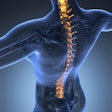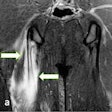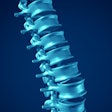
Ultrasound helps identify patellar tendon characteristics that distinguish elite football players from nonelite ones, according to a study published online on 2 June in the European Journal of Applied Physiology.
Conall Murtagh, PhD, of the U.K.'s Liverpool John Moores University, and colleagues explored whether differences in patellar tendon properties between elite and nonelite football players were related to power for unilateral jumps performed in different directions.
The study included 29 football players (16 elite and 13 nonelite) who performed vertical, horizontal-forward, and medial unilateral countermovement jumps on a force plate. Using ultrasound and isokinetic dynamometry, the group assessed each athlete's patellar tendon cross-sectional area and elongation.
The researchers found that elite athletes showed greater patellar tendon elongation compared with the nonelite athletes (6.83 mm versus 4.92 mm); increased tendon elongation correlated with higher projectile range and peak horizontal power during horizontal-forward countermovement jumps.
"Not only does a more compliant patellar tendon appear to be an indicator of elite [football] playing status, but it may also facilitate unilateral horizontal-forward and medial ... countermovement jump performance," the group wrote. "These findings should be considered when prescribing talent selection and development protocols related to direction-specific power in elite [football] players."
















